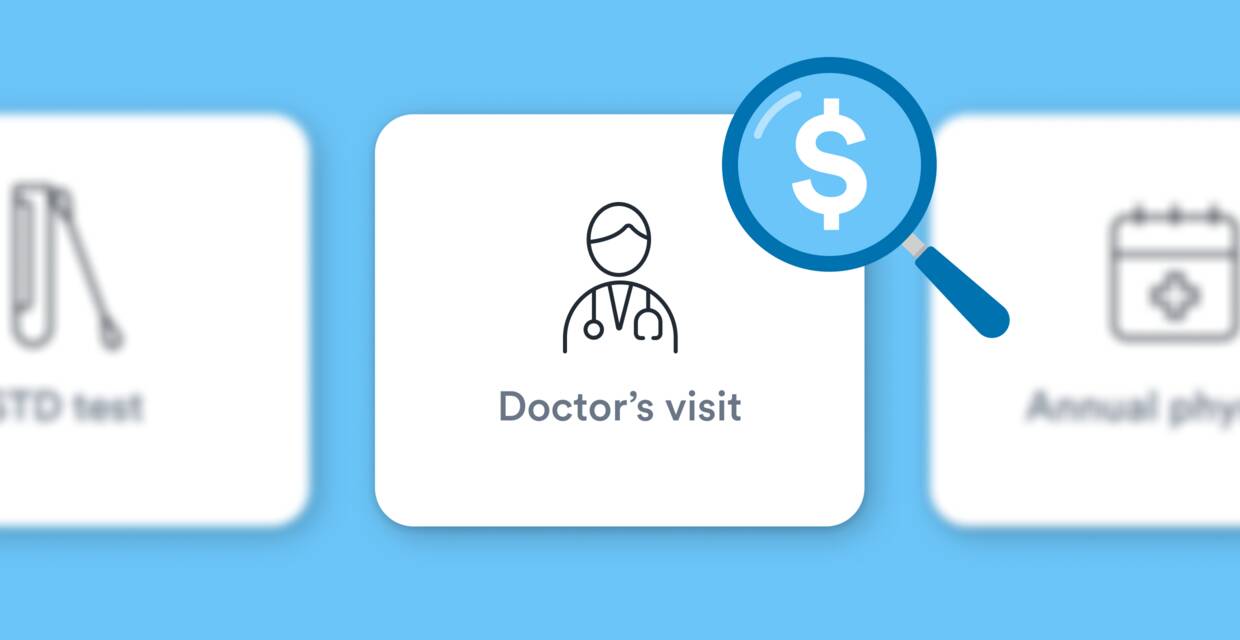Home>Finance>How Much Is A Orthopedic Visit Without Insurance


Finance
How Much Is A Orthopedic Visit Without Insurance
Published: November 23, 2023
Get information on the cost of orthopedic visits without insurance and find out how to finance your orthopedic care.
(Many of the links in this article redirect to a specific reviewed product. Your purchase of these products through affiliate links helps to generate commission for LiveWell, at no extra cost. Learn more)
Table of Contents
Introduction
An orthopedic visit is an essential step towards diagnosing and treating musculoskeletal conditions and injuries. Whether you’ve experienced a sprain, strain, or are dealing with chronic joint pain, seeking professional help from an orthopedic specialist can provide the expertise needed to address your concerns. However, one factor that often comes into play when considering orthopedic visits is the cost, especially if you don’t have insurance coverage.
Without insurance, medical expenses can be a significant burden, and orthopedic visits are no exception. It is essential to understand the potential costs involved and explore options for managing expenses while still receiving the care you need. In this article, we will delve into the intricacies of orthopedic visits without insurance, including the average costs, factors that influence these costs, as well as potential strategies to reduce expenses.
By gaining insight into the cost dynamics of orthopedic visits without insurance, you can make informed decisions about your healthcare options and find ways to navigate the financial aspects of seeking orthopedic care.
Understanding Orthopedic Visits
An orthopedic visit involves a consultation with a medical professional specializing in the diagnosis and treatment of conditions affecting the musculoskeletal system, which includes the bones, joints, muscles, ligaments, and tendons. Orthopedic specialists play a crucial role in addressing a wide range of issues, such as fractures, arthritis, sports injuries, and other musculoskeletal disorders.
During an orthopedic visit, the specialist will typically conduct a thorough evaluation of your symptoms, medical history, and may order diagnostic tests such as X-rays, MRIs, or blood tests to aid in diagnosis. Based on their findings, they will recommend a course of treatment, which may include medication, physical therapy, orthopedic devices (such as braces), or, in more severe cases, surgical intervention.
Orthopedic visits are important for several reasons. First and foremost, they provide an accurate diagnosis, helping patients understand the root cause of their symptoms and the appropriate treatment options available. Additionally, orthopedic specialists can offer guidance on preventing further injury, managing chronic conditions, and providing strategies to improve mobility and overall quality of life.
It is worth noting that orthopedic visits may also involve follow-up appointments for ongoing treatment, monitoring healing progress, or adjusting treatment plans as needed. Regular check-ins with your orthopedic specialist can ensure that your condition is properly managed and that any necessary adjustments are made along the way.
Now that we have a basic understanding of what orthopedic visits are, let’s dive into the costs associated with these visits when insurance coverage is not available.
Costs of Orthopedic Visits with Insurance
Havig health insurance coverage can greatly alleviate the financial burden of orthopedic visits. With insurance, your out-of-pocket costs are typically determined by your specific plan, including factors such as deductibles, co-pays, and co-insurance.
It is important to review your health insurance policy to understand how it covers orthopedic visits. Some insurance plans may require a referral from a primary care physician or have restrictions on which orthopedic specialists you can see. Additionally, there may be limitations on the number of visits covered per year or specific requirements for pre-authorization before certain treatments or surgeries.
Typically, with insurance coverage, you will be responsible for paying a co-pay at each orthopedic visit. This is a fixed amount that you pay out of pocket, usually ranging from $20 to $50 per visit, depending on your insurance plan. In some cases, you may also need to meet a deductible before your insurance coverage kicks in. The deductible is the amount you must pay out of pocket before your insurance starts covering a portion of the costs.
Once you have met your deductible, you may still have to pay a percentage of the costs through co-insurance. For example, if your insurance plan has a 20% co-insurance rate, you would be responsible for paying 20% of the allowable charges for the visit, while the insurance company would cover the remaining 80%.
Keep in mind that the costs of diagnostic tests, such as X-rays or MRIs, are usually separate from the orthopedic visit itself. These tests may have their own co-pays, deductibles, or co-insurance fees. It’s important to familiarize yourself with your insurance policy to understand how these additional costs are handled.
While having insurance coverage can significantly reduce your out-of-pocket costs for orthopedic visits, it’s essential to budget for these expenses and understand the potential limitations or requirements set by your insurance provider.
Factors that Influence the Cost of Orthopedic Visits without Insurance
When it comes to orthopedic visits without insurance coverage, several factors can influence the overall cost. Understanding these factors can help you better anticipate and manage your expenses.
1. Type of Specialist: The specific type of orthopedic specialist you visit can impact the cost. Orthopedic surgeons, for example, may charge higher fees than non-surgical orthopedic specialists or general orthopedic practitioners. It’s important to research and compare costs among different specialists in your area.
2. Geographical Location: The cost of orthopedic visits can vary depending on your geographical location. Areas with higher living expenses or a higher demand for orthopedic services may have higher prices. Consider researching orthopedic practices in nearby cities or towns to compare costs.
3. Complexity of Condition: The complexity of your orthopedic condition can impact the cost of treatment. More complex conditions may require additional diagnostic tests, follow-up visits, or specialized treatment options, all of which can increase the overall cost.
4. Diagnostic Tests: Diagnostic tests such as X-rays, MRIs, or CT scans play an essential role in diagnosing orthopedic conditions. These tests can add to the overall cost of the visit, and the price can vary depending on the facility where the tests are conducted. It may be worth exploring different radiology centers or asking your orthopedic specialist for recommendations to potentially reduce these costs.
5. Treatment Options: The recommended treatment options for your orthopedic condition will also impact the cost. Non-surgical treatments such as physical therapy or medication may be more affordable than surgical interventions, which often require hospital fees, anesthesia, and other associated costs.
6. Additional Services and Fees: Ancillary services such as orthopedic braces, crutches, or splints may be necessary for your treatment and can add to the overall cost. Additionally, administrative fees, facility fees, and other miscellaneous charges can also contribute to the expense.
It is crucial to discuss costs upfront with your orthopedic specialist and their office staff. They can provide you with an estimate of the expected expenses and offer guidance on potential cost-saving options.
Average Cost of Orthopedic Visits without Insurance
The average cost of orthopedic visits without insurance can vary significantly depending on several factors, including the ones mentioned earlier. It is important to note that the costs mentioned here are approximate averages and can differ based on your specific circumstances and location.
Orthopedic consultations without insurance can range anywhere from $100 to $500 per visit. This cost typically includes the initial evaluation, medical history review, physical examination, and a discussion of treatment options. However, keep in mind that this does not include any additional services, diagnostic tests, or treatments that may be recommended.
Diagnostic tests, such as X-rays, can add an additional $100 to $500 to the overall cost of the visit. More advanced imaging studies, like MRIs or CT scans, can range from $500 to $2,000 or more, depending on the specific test and the facility where it is performed.
If surgical intervention is required, the cost can significantly increase. Orthopedic surgeries can range from a few thousand dollars to tens of thousands of dollars, depending on the complexity of the procedure, the type of anesthesia used, and the length of the hospital stay, among other factors.
It is important to consider that these costs are for individual visits or specific procedures only. Ongoing treatment, follow-up visits, physical therapy sessions, and the cost of any necessary orthopedic devices can add up over time. It is crucial to discuss your financial situation with your orthopedic specialist, as they may be able to offer payment plans or suggest lower-cost alternatives when appropriate.
Please keep in mind that these are general average costs, and they can vary depending on the factors mentioned previously, as well as the specific healthcare providers you visit.
Now that we have an understanding of the average costs of orthopedic visits without insurance, let’s explore some strategies to help reduce these expenses.
Options for Reducing Costs without Insurance
Managing the costs of orthopedic visits without insurance can be challenging, but there are several strategies you can employ to help reduce these expenses. Here are some options to consider:
1. Research and Compare Prices: Take the time to research and compare prices among various orthopedic specialists and clinics in your area. Look for providers who offer transparent pricing or offer discounted rates for self-pay patients. Consider reaching out to multiple providers to inquire about their fees and payment options.
2. Negotiate Payment Plans: Many orthopedic practices are willing to work with patients to develop payment plans that fit their financial situation. Don’t hesitate to discuss your circumstances with your orthopedic specialist’s office and inquire about payment arrangements. They may be able to help you spread out the cost of your visits over time.
3. Seek Out Community Health Centers: Community health centers often provide affordable healthcare options for individuals without insurance. These centers may offer orthopedic services or be able to refer you to low-cost orthopedic care providers in your area.
4. Utilize Urgent Care or Walk-In Clinics: For non-emergency orthopedic concerns, consider visiting an urgent care or walk-in clinic. These facilities typically offer lower costs compared to hospital-based orthopedic departments or specialist practices. They can provide initial evaluations, X-rays, and basic treatments for common orthopedic issues.
5. Explore Flexible Spending Accounts (FSAs) or Health Savings Accounts (HSAs): If you have an FSA or HSA, consider using the funds to cover orthopedic visit costs. These accounts allow you to set aside pre-tax dollars for medical expenses, including orthopedic care.
6. Research Free or Low-Cost Medical Events: Keep an eye out for free or low-cost medical events in your community. These events often provide basic orthopedic screenings, consultations, and even treatments at reduced or no cost.
7. Investigate Charitable Organizations and Health Programs: There are charitable organizations and health programs that offer financial assistance or reduced-cost services to individuals without insurance. Research these resources in your area to see if you qualify for any assistance.
Remember, it’s crucial to communicate openly with your orthopedic specialist about your financial situation. They may be able to recommend alternative treatment options or suggest ways to reduce costs while ensuring you still receive necessary care.
By exploring these options and being proactive in managing your healthcare expenses, you can navigate the costs of orthopedic visits without insurance more effectively.
Conclusion
Orthopedic visits without insurance can be a daunting financial challenge, but understanding the cost dynamics of these visits and exploring strategies to reduce expenses can help alleviate the burden. Orthopedic care is crucial for diagnosing and treating musculoskeletal conditions, and it’s important not to neglect your health due to financial concerns.
With insurance, the cost of orthopedic visits is typically mitigated by co-pays, deductibles, and co-insurance. However, for those without insurance coverage, the cost can be significant.
Factors such as the type of specialist, geographical location, complexity of the condition, diagnostic tests, treatment options, and additional services can all influence the overall cost. It’s important to research and compare prices, explore payment plans or assistance options, and consider alternative healthcare settings like urgent care or community health centers to reduce expenses.
Being proactive in your healthcare journey and openly communicating with your orthopedic specialist about your financial situation can help you explore cost-saving options and access necessary care.
Remember, your health should always be a priority. If you’re facing financial challenges, reach out to local resources, charitable organizations, or clinics that offer reduced-cost or free orthopedic services. No one should have to forgo necessary care due to financial constraints.
By arming yourself with knowledge, exploring cost-cutting strategies, and seeking out available resources, you can navigate the costs of orthopedic visits without insurance and prioritize your musculoskeletal health.














